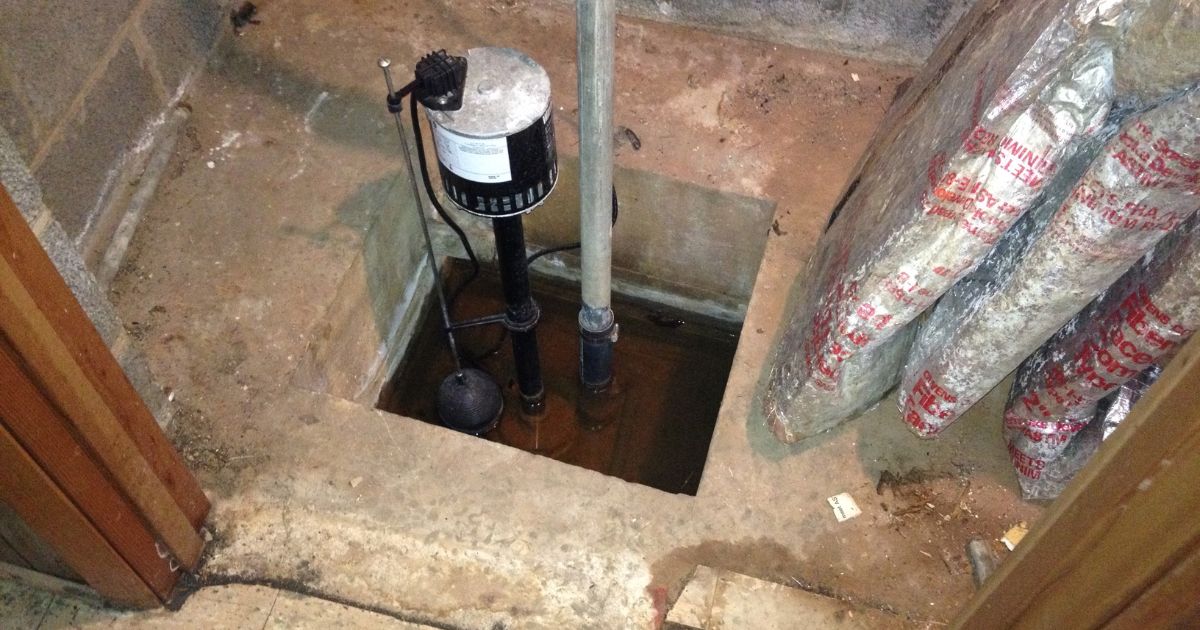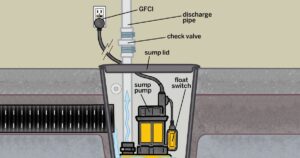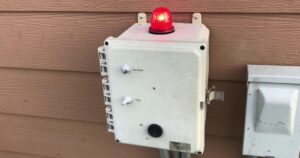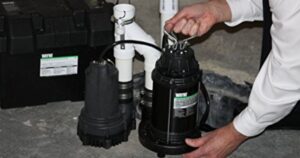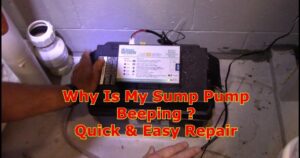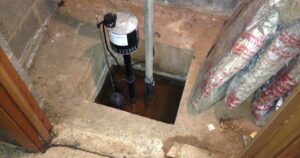Discover the dynamic duo that safeguards your home from the silent threat of radon with the revolutionary Radon Mitigation System Sump Pump. This powerful combination not only combats radon, but also ensures your family’s safety with its innovative design and state-of-the-art technology. By seamlessly integrating radon mitigation with sump pump functionality, this system provides unparalleled protection, giving you peace of mind and a sense of belonging in your own home. Join us as we delve into the depths of this essential home safety solution.
Key Takeaways
- Radon mitigation sump pumps use a powerful fan to create negative pressure.
- The fan pulls radon gas from the soil beneath the foundation.
- Sump pumps are installed in a sump pit or designated area in the basement.
- Integrating radon mitigation with existing sump pumps addresses two issues simultaneously.
How Radon Mitigation Sump Pumps Work
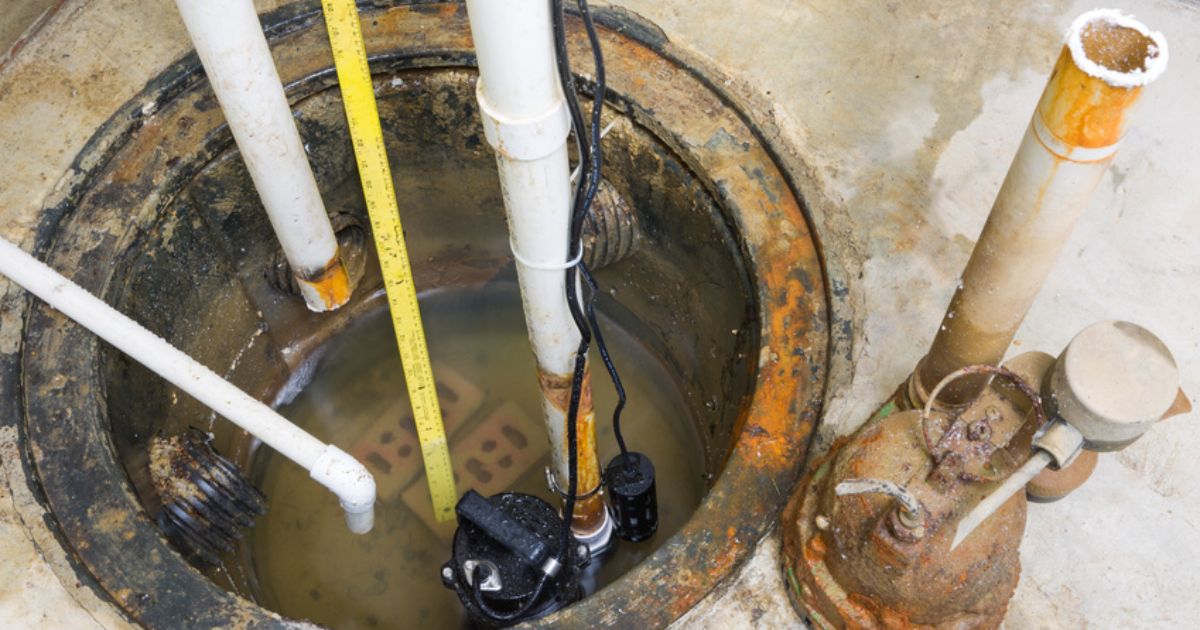
Radon mitigation sump pumps effectively remove a significant amount of radon gas from basements or crawl spaces by using a powerful fan to create negative pressure, preventing radon from entering the living area. These sump pumps are designed to be installed in a sump pit or a designated area in the basement or crawlspace. The fan creates suction, pulling the radon gas from the soil beneath the foundation and directing it outside, away from the living space.
This process helps to reduce the levels of radon gas, which is a known carcinogen, to safe levels. Radon mitigation sump pumps are an essential component of any radon mitigation system, as they play a vital role in ensuring the safety and well-being of occupants in a home. Now, let’s explore the benefits of radon mitigation system sump pumps.
Benefits of Radon Mitigation System Sump Pumps
One of the key advantages of incorporating a radon Mitigation System Sump Pump is its ability to effectively reduce radon gas levels in basements or crawl spaces. Radon is a radioactive gas that is odorless, tasteless, and invisible, making it difficult to detect without specialized equipment. By installing a radon mitigation system sump pump, homeowners can take proactive measures to protect themselves and their families from the harmful effects of radon exposure. Some of the benefits of a radon mitigation system sump pump include:
- Improved Indoor Air Quality: A radon mitigation system sump pump effectively removes radon gas from the basement or crawl space, which helps to improve the overall indoor air quality of the home.
- Health Benefits: Radon gas is a known carcinogen and long-term exposure can increase the risk of developing lung cancer. By reducing radon levels, a sump pump system helps to minimize this health risk.
- Peace of Mind: Knowing that a radon mitigation system sump pump is in place provides homeowners with peace of mind, knowing that they have taken steps to create a safe living environment for their family.
- Increased Property Value: Installing a radon mitigation system sump pump can increase the value of a property, as it demonstrates to potential buyers that the home has been equipped with measures to reduce radon gas levels.
Importance of Radon Mitigation for Home Safety
The incorporation of a radon mitigation system sump pump is crucial for ensuring home safety and protecting residents from the harmful effects of radon gas exposure. Radon, a colorless and odorless gas, is a leading cause of lung cancer and poses a significant threat to the health of individuals living in radon-prone areas. By installing a radon mitigation system that includes a sump pump, homeowners can effectively reduce radon levels in their homes and create a safer living environment for themselves and their families.
The sump pump plays a vital role in the radon mitigation process by removing excess water from the foundation of the home. This prevents water infiltration and the accumulation of radon gas, which is often found in higher concentrations in damp or moist areas. The sump pump works by collecting water in a basin and then pumping it away from the foundation, reducing the risk of radon gas seepage into the living space.
In addition to protecting residents from radon gas exposure, a radon mitigation system with a sump pump can also help prevent other issues associated with excess moisture, such as mold growth and structural damage. This further enhances the overall safety and well-being of the home.
Different Types of Radon Mitigation Systems

- Sub-slab depressurization: This is the most common type of radon mitigation system. It involves installing a pipe system under the foundation of the home to draw out radon gas and vent it outside.
- Sump pump suction: This system involves connecting the radon mitigation system to the sump pump pit. The suction created by the pump helps to remove radon gas from the soil beneath the foundation.
- Crawlspace ventilation: This system is used for homes with crawlspaces. It involves installing fans or vents to circulate air and reduce radon levels in the crawlspace.
- Block wall suction: This system is used for homes with block foundation walls. It involves creating a suction point in the wall to draw out radon gas.
Now that we have discussed the different types of radon mitigation systems, let’s explore how radon mitigation can be incorporated with sump pumps.
Incorporating Radon Mitigation With Sump Pumps
To further enhance radon mitigation efforts, homeowners can integrate radon mitigation systems with their existing sump pumps. Sump pumps are commonly found in homes with basements or crawl spaces and are used to remove excess water to prevent flooding. By incorporating radon mitigation with sump pumps, homeowners can address two issues simultaneously – water damage prevention and radon reduction.
This integration involves installing a radon mitigation system alongside the sump pump system, allowing the sump pump to continue its water removal function while also extracting radon gas from the soil beneath the home. This combined approach provides an efficient and cost-effective solution for homeowners who want to mitigate radon levels while also ensuring proper water drainage. By integrating radon mitigation with sump pumps, homeowners can have peace of mind knowing that they are taking proactive measures to protect their homes and their health.
Sump Covers in Radon Mitigation Systems
Incorporating sump covers is a crucial aspect of radon mitigation systems, as they play a vital role in preventing the release of radon gas into the home. Sump covers serve as a barrier, ensuring that radon gas does not escape into the living space. Here are four key reasons why sump covers are important in radon mitigation systems:
- Containment: Sump covers provide a sealed enclosure for the sump pit, preventing radon gas from seeping through cracks or gaps in the pit.
- Airflow control: By covering the sump pit, airflow can be directed more efficiently through the ventilation system, allowing for effective radon mitigation.
- Safety measures: Sump covers reduce the risk of accidental falls into the pit, protecting homeowners from potential injuries.
- Aesthetic appeal: Sump covers can be designed to blend seamlessly with the surrounding flooring, ensuring a visually pleasing appearance.
Ensuring Proper Functioning of Radon Mitigation Systems
One key aspect of ensuring the proper functioning of a radon mitigation system is regular maintenance and inspection. By conducting routine checks and upkeep, homeowners can guarantee that their system is effectively reducing radon levels in their home. Regular maintenance includes inspecting the radon mitigation system components, such as the fan, piping, and sump pump, to ensure they are in good working condition. It is important to check for any signs of damage, blockages, or leaks that could compromise the system’s efficiency.
Additionally, homeowners should monitor the system’s performance by regularly testing radon levels in their home. This will help identify any issues or fluctuations in radon levels that may require adjustments or repairs to the mitigation system. By prioritizing regular maintenance and inspection, homeowners can have peace of mind knowing that their radon mitigation system is functioning optimally to protect their health and well-being.
Innovative Radon Mitigation System Components
An essential aspect of maintaining an effective radon mitigation system is incorporating innovative components that enhance its functionality and efficiency. These components not only help to reduce radon levels but also contribute to a healthier and safer living environment. Here are four innovative radon mitigation system components that are currently making a significant impact:
- Advanced Radon Fans: These fans are designed to provide optimal airflow and suction, ensuring efficient radon gas extraction from the soil beneath the foundation.
- Smart Radon Monitors: These monitors continuously track radon levels and provide real-time data, allowing homeowners to monitor and take necessary actions promptly.
- Sealed Sump Pump Covers: Sump pumps are crucial in preventing water damage in basements. Innovative sealed covers not only protect against water intrusion but also help in preventing radon gas from entering the living space.
- Active Soil Depressurization Systems: These systems use a combination of fans and pipes to create a vacuum beneath the foundation, effectively venting radon gas outside the home.
Conclusion
In conclusion, the use of radon mitigation system sump pumps is crucial for ensuring home safety and reducing the risk of radon exposure. These systems effectively remove radon gas from the soil and prevent it from entering the living space. By incorporating radon mitigation with sump pumps and using sump covers, homeowners can further enhance the effectiveness of the system. Regular maintenance and monitoring are essential to ensure proper functioning of radon mitigation systems. Overall, these innovative components play a vital role in keeping homes radon-free.
